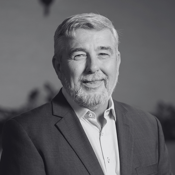|

|
Paul Turner
- Brisbane is Queensland’s biggest mining town, directly and indirectly employing over 220,000 people - around a third of the full-time workforce - and contributing $46 billion to the city’s GDP.
- The connection between Southeast Queensland and the rest of the state through mining
is critical; it’s not an ‘us versus them’ situation.
- There’s no sustainable future in Queensland without the resources sector - its role is inevitable, underpinning our entire economy and renewable future.
- You can’t build the new stadium in Brisbane without 30,000 tons of steel produced from Queensland coal, nor fund the Olympics without resource sector royalties.
- Beyond coal and gas, rare minerals and metals like zinc are increasingly important in this sector.
- Overall, resources contributed $35.8 billion supporting Queensland businesses and
generated $12.8 billion in royalties last year
|

|
Janette Hewson
- I joined the Queensland Resources Council (QRC) as CEO last year.
- We have over 200 members representing every part of the resources ecosystem, including
explorers through our Queensland Exploration Council, producers who rail and ship products domestically and internationally, contractors like Hastings Deering, and many consultants and services members.
- We represent coal, gas, metals and emerging critical minerals.
- The resources sector has a significant contribution to the Queensland economy - one in every $4 of the state’s economy is generated through the resources sector, supporting
17,000 Queensland businesses and one in every six jobs.
- Beyond the economic contribution, the sector also facilitates personal connections – for example, in understanding and working with people and businesses in the regions. This shows the real difference the resources sector makes across Queensland – both in regional areas and in Southeast Queensland.
|
|

|
Professor Rick Valenta
- The Sustainable Minerals Institute focuses on understanding and optimising the role of
resources in global sustainability.
- We work closely with diverse stakeholders, including mining companies, governments,
NGOs and international organisations.
- Our aim is to understand mining regions deeply and improve outcomes for people, the
environment and mining projects themselves.
- We partner on mining projects to enhance sustainability outcomes, reduce environmental
footprints and improve efficiencies.
- We also collaborate with stakeholders and postgraduate students to foster future leadership in the industry.
- Our strength is producing and commercialising innovations and enabling technologies through long-term, multi-project, co-creative partnerships. This approach is collaborative,
allowing us to align our research capabilities with industry challenges to find practical, relevant solutions.
- We engage broadly across sectors, including coal, gas, copper, gold, phosphate and other critical resources.
|

|
Mariette Bylsma
- Having worked in mining for 20 years on major projects globally, including in the U.S. and Canada, I have seen first hand the positive impact our industry has on communities, economies and society.
- BMA alone contributed more than $4 billion in royalties, taxes and government grants in FY24.
- We also spent over $8 billion with suppliers, reflecting our strong footprint in regional Queensland and growing partnerships with local suppliers.
- BMA operates five mines across central Queensland - four open-cut and one underground; we own the Hay Point Coal Terminal in Mackay, with an extensive rail network transporting coal from Central Queensland to Mackay for global export.
- At any given time, about 10,000 people work directly or indirectly in our business.
- Our success relies heavily on partnerships - working closely with industry bodies, academia and service contractors.
|

|
Mark Scott
- Hastings Deering was established in 1932 and is deeply entwined with Queensland’s resources industry.
- Reinforcing Janette’s earlier points - one in every $4 in Queensland’s economy and one in six jobs are linked to the resources industry, showing its positive economic impact for Queensland and Australia broadly.
- We have some of the world’s best providers along the entire value chain – from materials,
miners, contractors and service providers.
- We are world-leading in safety, sustainability, productivity and best-practice management.
- We operate on a global scale, contributing significantly to Queensland’s economy and international standing.
- As a service provider, it’s important to remember our global presence requires economic
sustainability for the industry to enable continuous reinvestment, growth and prosperity.
|
| How do you view the current public perception of mining—particularly coal and gas—and its impact on Queensland’s economy? |

|
Janette Hewson
- Over the past 15 years, the industry has experienced criticism from the anti-fossil fuel movement and has lost bipartisan support, despite our major economic and social contributions.
- It has felt like we’ve been forced to choose sides, rather than focusing on making Australia
as productive and economically strong as possible.
- Industry associations and member companies have worked hard to explain our contributions and importance - this work will remain necessary.
- Recent research we conducted with 1,200 Queenslanders immediately after the state election showed around 70% of Queenslanders understand the importance of the resources sector, and about half of Queenslanders view the industry favourably.
- While we explain our economic contributions well, we must also highlight our leadership
in decarbonisation.
- For example, the resources sector has led in emissions measurement and decarbonisation
initiatives for around 15 years – preceding many other industries.
- Clearly communicating our environmental practices and decarbonisation efforts is critical to improving our public perception.
|
|
Is Queensland - and Australia more broadly - currently seen as an attractive and stable destination for
resources investment? Is sovereign risk becoming a concern for international capital, given the scale of investment required?
|

|
Mariette Bylsma
- I believe Queensland is uniquely positioned with some of the world’s best high-grade
metallurgical coal assets.
- With growing demand for metallurgical coal - especially from regions like India and Southeast Asia - Queensland is strongly placed to respond and lead in technological innovation.
- Metallurgical coal is essential for producing steel needed in infrastructure for a low carbon future, such as wind turbines and transmission lines - and we mine that right here in Central Queensland.
- Queensland must consider how to remain attractive for future investment and growth,
which requires stable and consistent policy settings.
- The 2022 royalty regime change by the previous Queensland Government significantly challenged our competitiveness and attractiveness as an investment destination, making the state one of the highest tax jurisdictions globally.
- Our industry needs resilience - not just through commodity price cycles, but also operational disruptions like significant rainfall events in Central Queensland earlier
this year.
- Our CEO publicly stated Queensland is no longer an attractive investment destination
due to these policy challenges, which hinder the industry’s resilience to these cycles.
- The state needs competitive, stable policy settings to attract international capital back to
Queensland and Australia – particularly given competition for other investments globally.
- We remain open to continued dialogue with the government, and it’s positive to see work
addressing regulatory timeframes for project approvals.
- However, from a cost-competitive perspective, doing business in Queensland remains
challenging. There’s a clear opportunity for Queensland to improve and regain a competitive investment environment if supported by the right investment settings.
|
| As a major provider to the resources sector, but with a significant Brisbane-based workforce, how critical is a strong and thriving Queensland resources industry for companies like Hastings Deering? |

|
Mark Scott
- Hastings Deering’s history and future are deeply entwined with the resources industry.
- Our business extends well beyond Brisbane - about a third of our employees are based
here and two thirds are spread across regional Queensland - from Weipa to the Bowen Basin, Mount Isa and southern areas.
- Our business operates in every part of the economy - from diesel mechanics working on Caterpillar trucks, to caterers, scientists, accountants, and cleaners.
- We invest billions in our facilities and infrastructure, and are currently undertaking significant upgrades in Central and Southern Queensland, including Brisbane, to build for
growth and support the industry’s future.
- To stay ahead it is important to understand the future industry and economic needs, including planning for training and capability building.
- We’re proud of our 45 consecutive years of training apprentices – and we are one of Australia’s largest single training organisations, especially in Queensland. This benefits
both our customers and the industry.
- Ongoing investment is critical - not just for our business, but also for Queensland and the broader economy. The resources industry’s certainty and ongoing opportunity underpins this necessary, continuous investment.
|
How do we balance our long-term sustainability and carbon targets with the continued importance of the resources industry to state economies like Queensland and Western Australia?
|
|

|
Professor Rick Valenta
- The assumption that sustainability and mining are opposing forces isn’t correct.
- Sustainability and mining are integral to each other; we cannot achieve our decarbonisation targets without significantly increasing mining.
- The metals we produce are essential for the global energy transition and meeting carbon targets.
- Although not yet widespread, I believe future metal buyers will increasingly assess jurisdictions based on their sustainability practices.
- For Queensland, the key point is we have the capacity and capability to mine sustainably. We are well positioned for this, given that we already lead the world in sustainable mining practices
|
|
If we are going to mine coal and iron ore, is Australia one of the best and most responsible places in
the world to do it?
|
|

|
Professor Rick Valenta
- It’s absolutely not an option to stop mining - we’ve seen detailed analyses showing we
won’t switch off these industries anytime soon.
- Queensland has exactly what the world needs, and we have the capability to lead the world in sustainably mining and producing these essential metals.
- However, there is also a significant opportunity for Queensland to further develop a downstream industry due to geopolitical pressures. However, but relying solely on market forces to achieve this is difficult – and it will therefore require government leadership and support.
- Governments face the challenge of deciding how far they should intervene to support
the development of critical minerals industries, especially as many deposits require complex and substantial investment.
- The real challenge is moving away from the idea that sustainability and mining are mutually exclusive. Instead, we should identify how Queensland can best address future global sustainability challenges, leveraging our competitive strengths.
- Queensland is uniquely placed to leverage our transferable skills and natural advantages, including infrastructure such as ports and renewable energy potential.
|


















